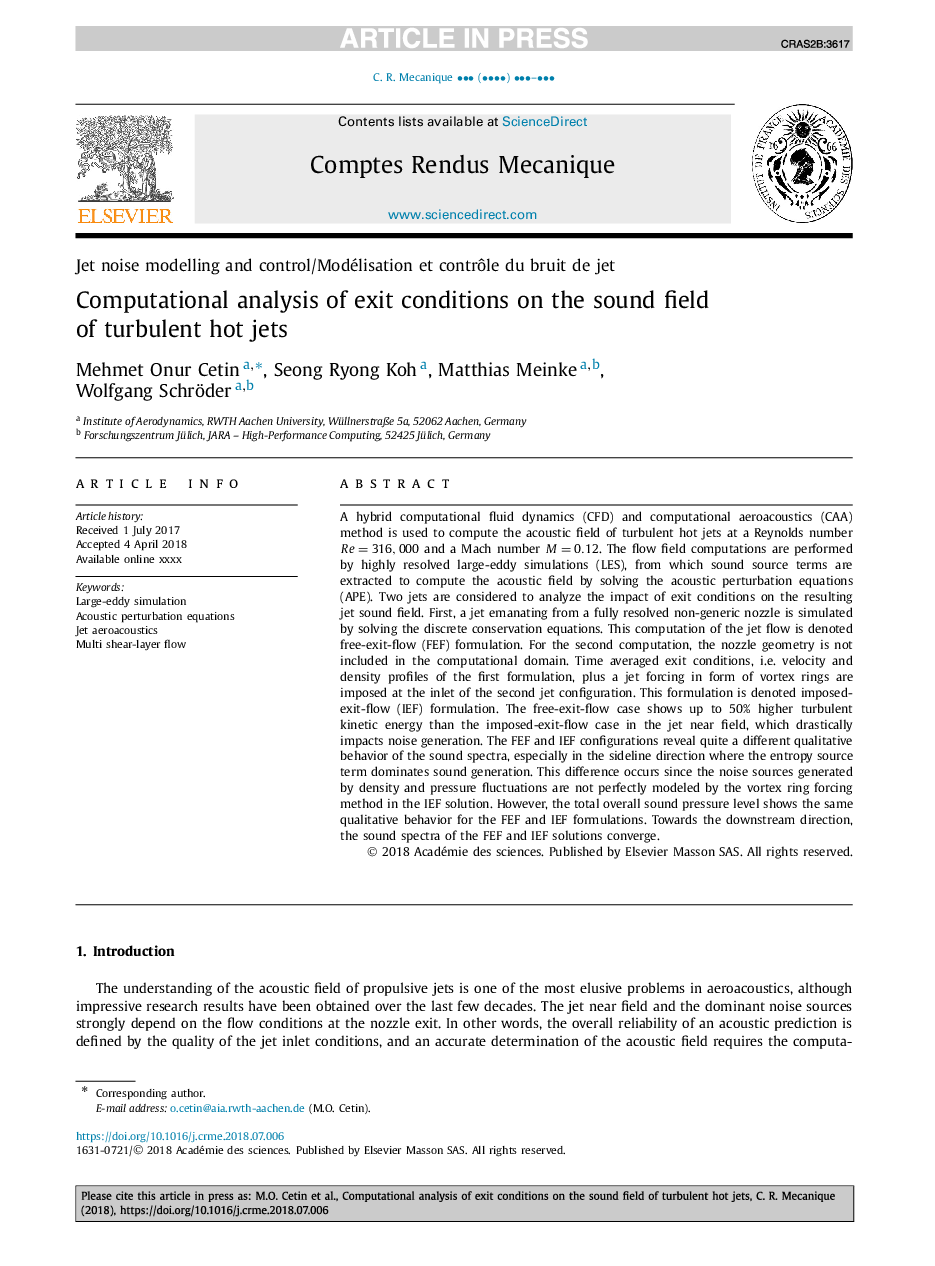| Article ID | Journal | Published Year | Pages | File Type |
|---|---|---|---|---|
| 10226571 | Comptes Rendus Mécanique | 2018 | 16 Pages |
Abstract
A hybrid computational fluid dynamics (CFD) and computational aeroacoustics (CAA) method is used to compute the acoustic field of turbulent hot jets at a Reynolds number Re=316,000 and a Mach number M=0.12. The flow field computations are performed by highly resolved large-eddy simulations (LES), from which sound source terms are extracted to compute the acoustic field by solving the acoustic perturbation equations (APE). Two jets are considered to analyze the impact of exit conditions on the resulting jet sound field. First, a jet emanating from a fully resolved non-generic nozzle is simulated by solving the discrete conservation equations. This computation of the jet flow is denoted free-exit-flow (FEF) formulation. For the second computation, the nozzle geometry is not included in the computational domain. Time averaged exit conditions, i.e. velocity and density profiles of the first formulation, plus a jet forcing in form of vortex rings are imposed at the inlet of the second jet configuration. This formulation is denoted imposed-exit-flow (IEF) formulation. The free-exit-flow case shows up to 50% higher turbulent kinetic energy than the imposed-exit-flow case in the jet near field, which drastically impacts noise generation. The FEF and IEF configurations reveal quite a different qualitative behavior of the sound spectra, especially in the sideline direction where the entropy source term dominates sound generation. This difference occurs since the noise sources generated by density and pressure fluctuations are not perfectly modeled by the vortex ring forcing method in the IEF solution. However, the total overall sound pressure level shows the same qualitative behavior for the FEF and IEF formulations. Towards the downstream direction, the sound spectra of the FEF and IEF solutions converge.
Related Topics
Physical Sciences and Engineering
Engineering
Engineering (General)
Authors
Mehmet Onur Cetin, Seong Ryong Koh, Matthias Meinke, Wolfgang Schröder,
